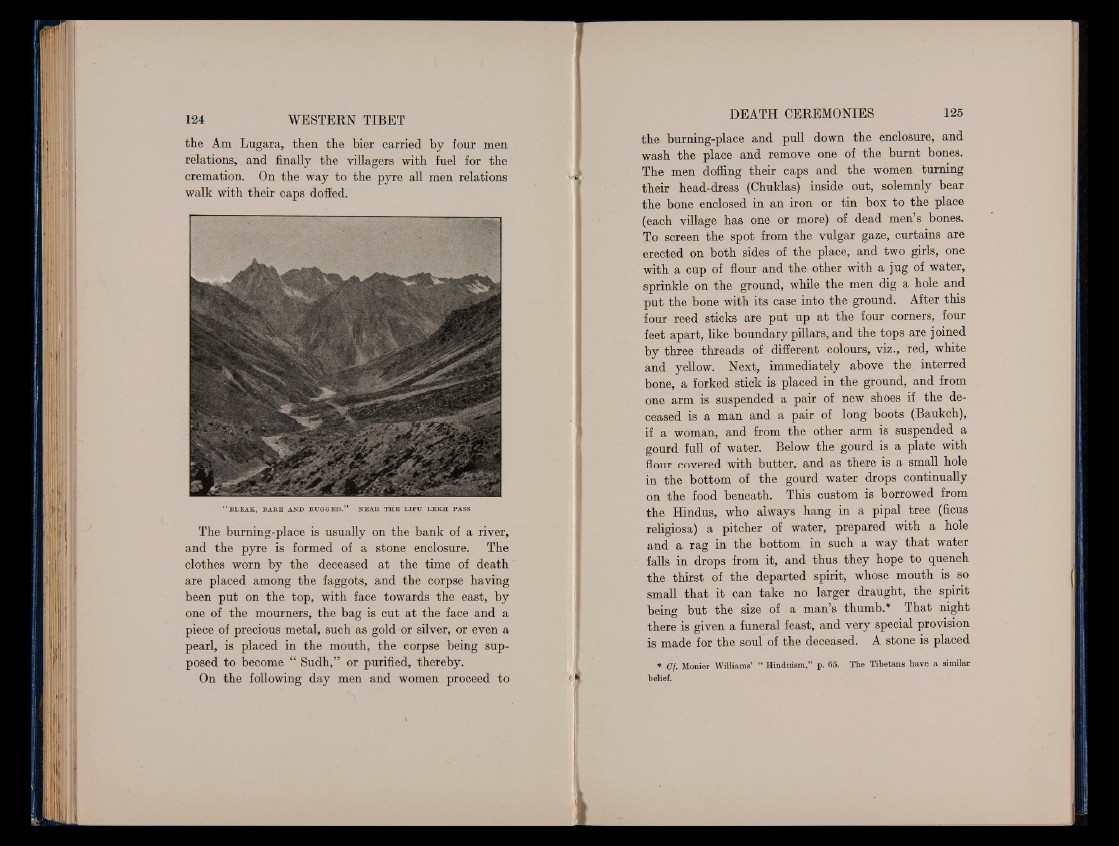
the Am Lugara, then the bier carried by four men
relations, and finally the villagers with fuel for the
cremation. On the way to the pyre all men relations
walk with their caps doffed.
“ BLEAK, BARE AND RUGGED.” NEAR THE LIPU LEKH PASS
The burning-place is usually on the bank of a river,
and the pyre is formed of a stone enclosure. The
clothes worn by the deceased at the time of death
are placed among the faggots, and the corpse having
been put on the top, with face towards the east, by
one of the mourners, the bag is cut at the face and a
piece of precious metal, such as gold or silver, or even a
pearl, is placed in the mouth, the corpse being supposed
to become “ Sudh,” or purified, thereby.
On the following day men and women proceed to
the burning-place and pull down the enclosure, and
wash the place and remove one of the burnt bones.
The men doffing their caps and the women turning
their head-dress (Chuklas) inside out, solemnly bear
the bone enclosed in an iron or tin box to the place
(each village has one or more) of dead men’s bones.
To screen the spot from the vulgar gaze, curtains are
erected on both sides of the place, and two girls, one
with a cup of flour and the other with a jug of water,
sprinkle on the ground, while the men dig a hole and
put the bone with its case into the ground. After this
four reed sticks are put up at the four corners, four
feet apart, like boundary pillars, and the tops are joined
by three threads of different colours, viz., red, white
and yellow. Next, immediately above the interred
bone, a forked stick is placed in the ground, and from
one arm is suspended a pair of new shoes if the deceased
is a man and a pair of long boots (Baukch),
if a woman, and from the other arm is suspended a
gourd full of water. Below the gourd is a plate with
flour covered with butter, and as there is a small hole
in the bottom of the gourd water drops continually
on the food beneath. This custom is borrowed from
the Hindus, who always hang in a pipal tree (ficus
religiosa) a pitcher of water, prepared with a hole
and a rag in the bottom in such a way that water
falls in drops from it, and thus they hope to quench
the thirst of the departed spirit, whose mouth is so
small that it can take no larger draught, the spirit
being but the size of a man’s thumb.* That night
there is given a funeral feast, and very special provision
is made for the soul of the deceased. A stone is placed
* Of. Monier Williams’ “ Hinduism,” p. 65. The Tibetans have a similar
belief.